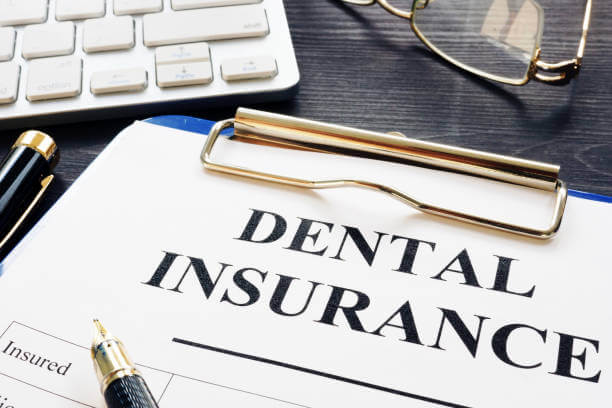
Navigating the world of dental care can be daunting, especially when it comes to understanding insurance networks and coverage. One of the primary concerns for individuals and families seeking dental treatment is whether their preferred dentist is part of their insurance network. If you’ve ever found yourself asking, “How do I know if my dentist is in-network?” you’re not alone. In this blog post from your Sloan Creek Dental dentist, we will shed light on this crucial aspect of dental care, guiding you through the process of determining if your dentist is in-network and providing tips to ensure that you get the most out of your insurance benefits.
An in-network dental provider refers to a dentist or dental practice that has chosen to join a particular dental insurance plan’s network of providers. By doing so, the dentist agrees to adhere to the insurance company’s contracted fees for dental services, which are generally lower than the fees they would charge if the patient was not insured. In-network providers consent to the dental plan’s terms and conditions and usually maintain strong relationships with the insurance company, streamlining the claims process for patients.
An out-of-network dental provider opts not to join insurance companies to avoid the limitations imposed on in-network dentists. Free from constraints, out-of-network dentists can focus solely on the patient’s best interests when diagnosing and treating dental issues. They are not burdened with thoughts like, “will their insurance approve this?” This independence allows them to operate without being hindered by the rules and regulations set by insurance companies.
As a result, out-of-network dentists have the freedom to utilize top-quality materials and techniques, guarantee the most aesthetically pleasing results, and devote ample time to their patients. Only you, as the patient, and your dentist are aware of your dental concerns, any sensitivity you might experience, and the desired appearance you wish to attain. Consequently, the most suitable treatment plan can only be determined by you and your dentist.
Most dentists will feature a Patient Resources page or a comparable page outlining the insurance companies they collaborate with. For instance, at Sloan Creek Dental, we display all the insurance policies we accept such as:
Therefore, it’s worth exploring the dentist’s website. You’ll probably be able to find information about the insurance providers they usually partner with and ascertain whether your policy is accepted.
If you need help locating information about the accepted insurance on the dentist’s website, your next course of action is to contact them via phone. The dental office staff will have more knowledge about the insurance policies they accept and will be able to check whether they accept your dental benefits and if there are any out-of-pocket costs.
Most health insurance and dental insurance companies offer a search tool to locate a dentist within your vicinity who collaborates with your dental plan. Metlife dental insurance, for instance, has a Find a Dentist tool accessible Here, which you can utilize to locate dental providers in your region that shows who is an in-network dentist with Metlife. This tool presents a convenient method to find an in-network dentist nearby who participates in your policy.
If you’ve been struggling to find a dental office or dentist that accepts your insurance policy, don’t worry! You still have options. One excellent option is to contact your insurance company directly. They can provide you with information about dentists in your area who accept your insurance and answer any questions you may have about your dental coverage.
It’s also a good idea to call your insurance company before you visit the dentist. This way, you can learn more about your coverage limits, which procedures are covered, your deductible, and other important information. This can help you avoid any unexpected dental fees and ensure you are fully informed about your dental care coverage.
Dental insurance plans can vary widely, but most plans cover basic preventative care such as regular exams and cleanings. Additionally, many plans offer coverage for restorative treatments like fillings, crowns, root canals, and extractions. Some plans may even extend coverage to a substantial portion of orthodontic treatments, including braces, Invisalign, or periodontal care.
If you need a tooth replacement, such as dentures, bridges, or implants, your insurance may partially cover the cost if you see an in-network dentist. In some cases, dental bonding to repair a chipped tooth may also be partially covered.
However, it’s important to note that cosmetic treatments like teeth whitening and porcelain veneers are typically not covered by insurance. These treatments are considered elective rather than medically necessary, so they may not be included in your coverage.
Taking good care of your teeth and gums is essential for overall well-being. It’s possible to achieve healthy gums and teeth through regular dental visits with your dentist. If you’re looking for a new dentist in Fairview, or around Allen, TX, feel free to call us at 972-468-1440, or you can even request an appointment online to schedule a dental appointment. Our team is dedicated to helping you achieve and maintain excellent oral health, and we look forward to welcoming you soon!

We firmly believe that the internet should be available and accessible to anyone, and are committed to providing a website that is accessible to the widest possible audience, regardless of circumstance and ability.
To fulfill this, we aim to adhere as strictly as possible to the World Wide Web Consortium’s (W3C) Web Content Accessibility Guidelines 2.1 (WCAG 2.1) at the AA level. These guidelines explain how to make web content accessible to people with a wide array of disabilities. Complying with those guidelines helps us ensure that the website is accessible to all people: blind people, people with motor impairments, visual impairment, cognitive disabilities, and more.
This website utilizes various technologies that are meant to make it as accessible as possible at all times. We utilize an accessibility interface that allows persons with specific disabilities to adjust the website’s UI (user interface) and design it to their personal needs.
Additionally, the website utilizes an AI-based application that runs in the background and optimizes its accessibility level constantly. This application remediates the website’s HTML, adapts Its functionality and behavior for screen-readers used by the blind users, and for keyboard functions used by individuals with motor impairments.
If you’ve found a malfunction or have ideas for improvement, we’ll be happy to hear from you. You can reach out to the website’s operators by using the following email
Our website implements the ARIA attributes (Accessible Rich Internet Applications) technique, alongside various different behavioral changes, to ensure blind users visiting with screen-readers are able to read, comprehend, and enjoy the website’s functions. As soon as a user with a screen-reader enters your site, they immediately receive a prompt to enter the Screen-Reader Profile so they can browse and operate your site effectively. Here’s how our website covers some of the most important screen-reader requirements, alongside console screenshots of code examples:
Screen-reader optimization: we run a background process that learns the website’s components from top to bottom, to ensure ongoing compliance even when updating the website. In this process, we provide screen-readers with meaningful data using the ARIA set of attributes. For example, we provide accurate form labels; descriptions for actionable icons (social media icons, search icons, cart icons, etc.); validation guidance for form inputs; element roles such as buttons, menus, modal dialogues (popups), and others. Additionally, the background process scans all of the website’s images and provides an accurate and meaningful image-object-recognition-based description as an ALT (alternate text) tag for images that are not described. It will also extract texts that are embedded within the image, using an OCR (optical character recognition) technology. To turn on screen-reader adjustments at any time, users need only to press the Alt+1 keyboard combination. Screen-reader users also get automatic announcements to turn the Screen-reader mode on as soon as they enter the website.
These adjustments are compatible with all popular screen readers, including JAWS and NVDA.
Keyboard navigation optimization: The background process also adjusts the website’s HTML, and adds various behaviors using JavaScript code to make the website operable by the keyboard. This includes the ability to navigate the website using the Tab and Shift+Tab keys, operate dropdowns with the arrow keys, close them with Esc, trigger buttons and links using the Enter key, navigate between radio and checkbox elements using the arrow keys, and fill them in with the Spacebar or Enter key.Additionally, keyboard users will find quick-navigation and content-skip menus, available at any time by clicking Alt+1, or as the first elements of the site while navigating with the keyboard. The background process also handles triggered popups by moving the keyboard focus towards them as soon as they appear, and not allow the focus drift outside of it.
Users can also use shortcuts such as “M” (menus), “H” (headings), “F” (forms), “B” (buttons), and “G” (graphics) to jump to specific elements.
We aim to support the widest array of browsers and assistive technologies as possible, so our users can choose the best fitting tools for them, with as few limitations as possible. Therefore, we have worked very hard to be able to support all major systems that comprise over 95% of the user market share including Google Chrome, Mozilla Firefox, Apple Safari, Opera and Microsoft Edge, JAWS and NVDA (screen readers), both for Windows and for MAC users.
Despite our very best efforts to allow anybody to adjust the website to their needs, there may still be pages or sections that are not fully accessible, are in the process of becoming accessible, or are lacking an adequate technological solution to make them accessible. Still, we are continually improving our accessibility, adding, updating and improving its options and features, and developing and adopting new technologies. All this is meant to reach the optimal level of accessibility, following technological advancements. For any assistance, please reach out to